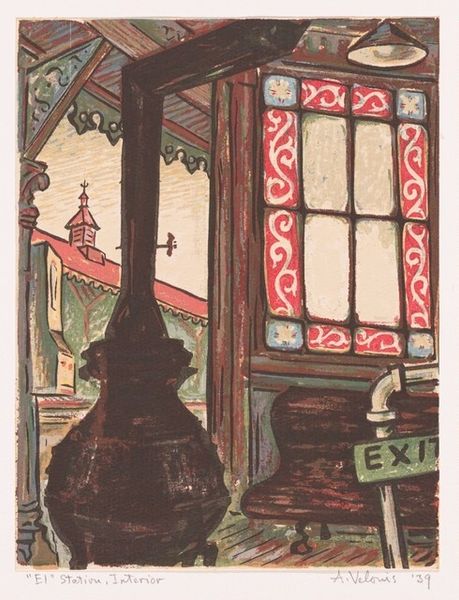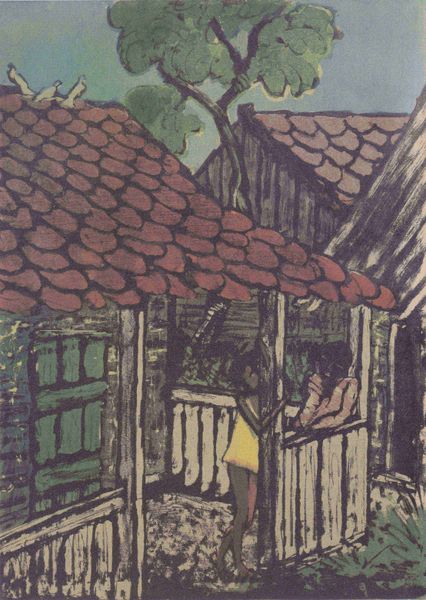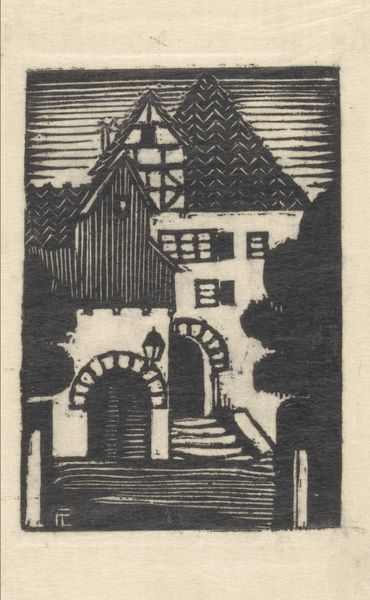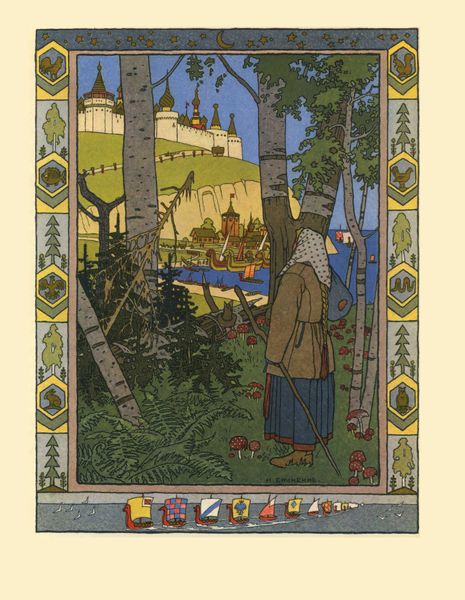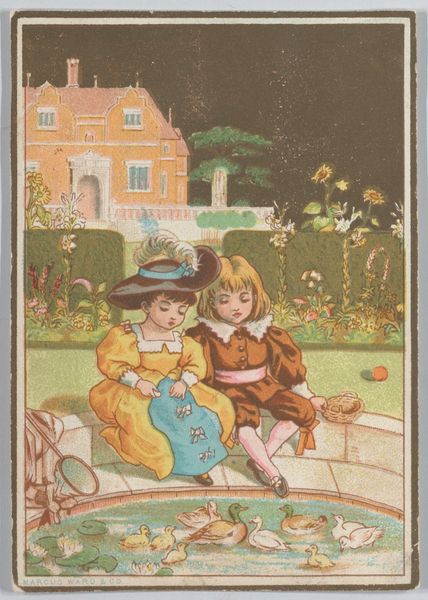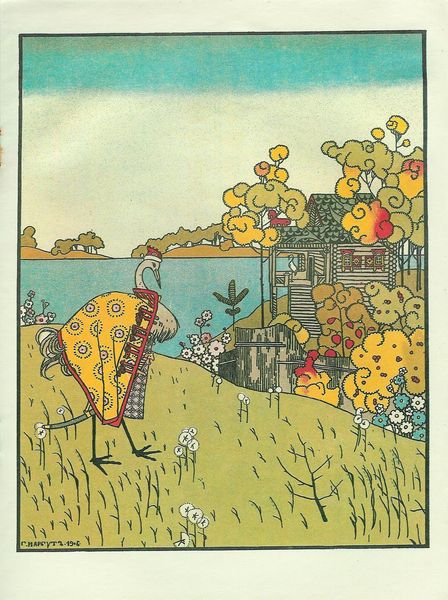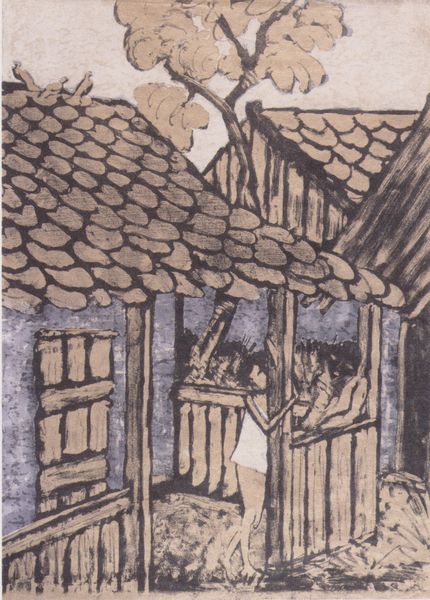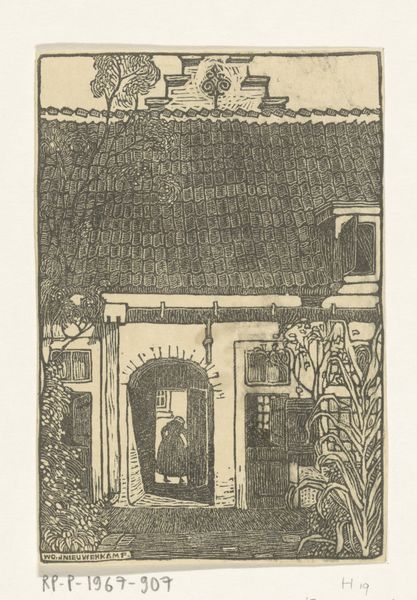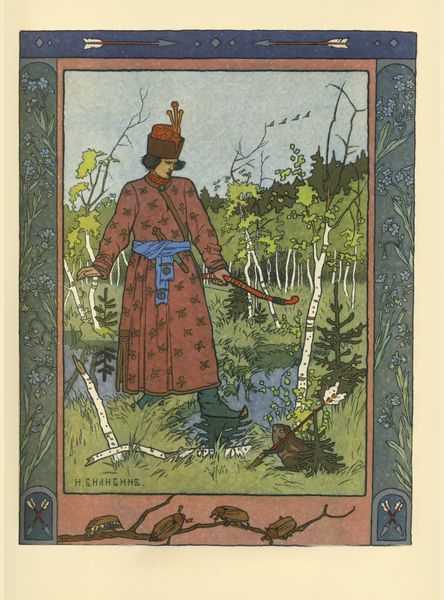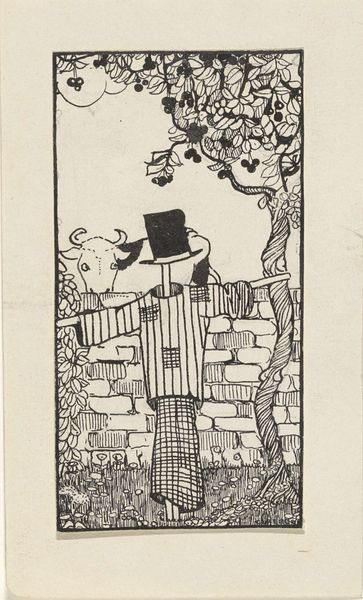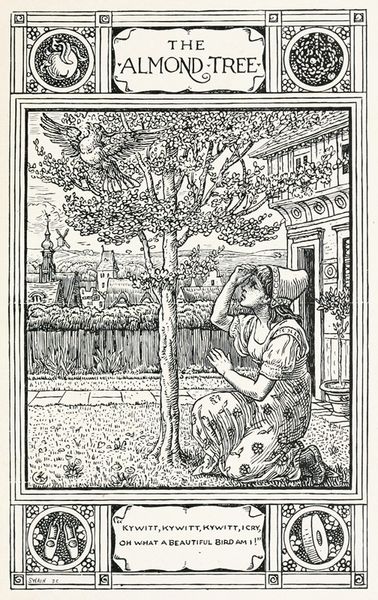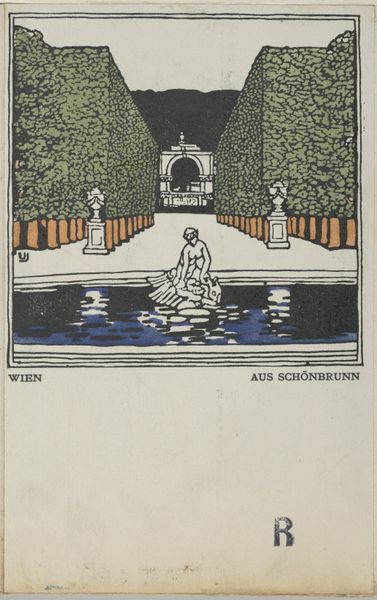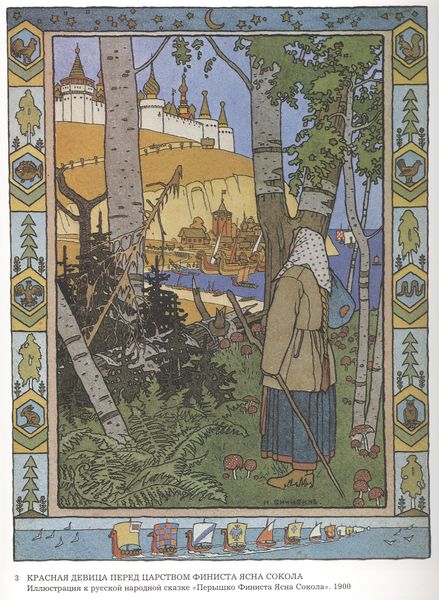
Dimensions: sheet: 5 1/2 x 3 7/16 in. (14 x 8.7 cm)
Copyright: Public Domain
Curator: Ah, here we have Otto Lendecke's "Easter Card," created in 1908. It’s a print that incorporates drawing and watercolor. It currently resides here at the Metropolitan Museum of Art. Editor: My initial response is quietude. The small scale, combined with the enclosed architecture and the lone figure, evoke a sense of peaceful introspection. Curator: The card certainly conveys that. Lendecke was active during a period of heightened nationalism and shifting social values, and the imagery used in such cards can reveal much about the prevailing attitudes towards religion, family, and community at the time. Editor: Yes, and notice how Lendecke uses geometric shapes: those regimented, triangular blossoms, the strictly delineated cobblestones, even the repeating forms in the roof tiles. This adds structure but almost veers into stylized naivety, giving the image a uniquely patterned look. Curator: Indeed. One could argue that by simplifying and stylizing nature, Lendecke aimed to evoke a sense of harmony and order. Note that these greeting cards were affordable, easily distributed, and highly effective at reinforcing societal values across broad audiences. Editor: It's interesting how the color functions too. The limited palette—greens, browns, reds—create visual harmony, guiding our eyes gently, without sharp contrasts or visual drama. The small figure almost disappears by using similar colours. Curator: The deliberate use of symbolism shouldn't be overlooked. Easter, of course, represents renewal and rebirth, but how this card was distributed within a family, or within a social circle says more about the nuances and negotiations around such events at this moment in history. Editor: Agreed. The entire composition draws my eye repeatedly over it and keeps me intrigued despite its deceptive simplicity. I like the way that those geometrical flowers give a fresh touch that is pleasing without distracting. Curator: This small print packs in an intriguing sense of the period, especially as we look at such everyday objects to tell us a lot about larger trends. Editor: Indeed, these close readings offer unique insights into not just an aesthetic style, but a way of life from more than a century ago.
Comments
No comments
Be the first to comment and join the conversation on the ultimate creative platform.
